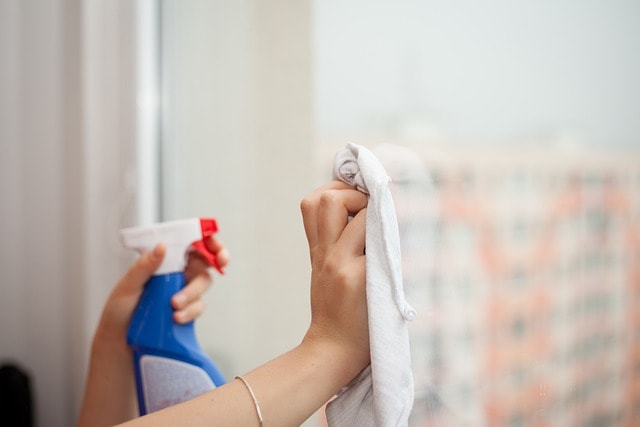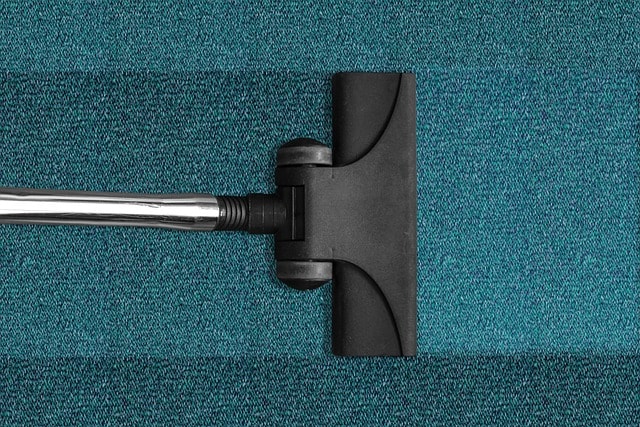Writing a business plan for a cleaning company in Australia is key to launching a successful cleaning business.
If you haven’t written a business plan for a cleaning company before (or for a while) this expanded guide will take you through the main sections of an expert cleaning company business plan.
Let’s get started!

Introduction
Starting a cleaning service business in Australia, with generally high levels of disposal income in comparison to other markets, can be a great opportunity to build a profitable business in a growing industry. But success in this competitive space requires more than just enthusiasm and elbow grease.
A professional cleaning services business plan is key to taking your business from idea to success. In this intro we will explain what a business plan is, why you need one for your cleaning business, some top tips on how to approach writing one, and all the key sections you need to write your cleaning company business plan.
First, what is a Business Plan?
A business plan is a written document that outlines the goals, strategies, target market, financial projections and operational plans for your business. It’s a roadmap for your company’s future, detailing the steps you need to take to achieve your objectives.
A good business plan covers many areas of the business including market analysis, marketing strategies, organisational structure and financial management. For a cleaning service, detailed understanding of your geographic and demographic target market is important.

Why is a Cleaning Services Business Plan Important?
-
Clarifies Vision and Direction: A cleaning company business plan helps you define your company’s vision, mission and core values, service offerings, competitive advantage, and sales forecast. It gives your business direction so everything is aligned to your long term goals.
-
Attracts Investors and Secures Funding: Investors and lenders require a business plan to evaluate your business. A well prepared plan shows your commitment, research and understanding of the market and increases your chances of getting the funding you need.
-
Identifies Strengths and Weaknesses: Writing a business plan forces you to do a thorough analysis of your business idea, identifying its strengths, weaknesses, opportunities and threats. This SWOT analysis is key to making informed decisions and developing strategies.
-
Guides Growth and Development: As your business grows a business plan is a reference point to measure progress and make adjustments. It helps you stay focused on your goals and adapt to changes in the market or industry.
-
Facilitates Strategic Planning: A business plan outlines the strategies you will use to achieve your business objectives. It includes marketing, operational and financial plans that give you a structured approach to running your business.
-
Improves Communication: A business plan is a valuable communication tool for stakeholders including employees, partners and investors. It ensures everyone involved understands the business’s goals and their role in achieving them.

Top Tips for Writing a Business Plan Yourself
-
Start with a Great Executive Summary: The executive summary is the first section of your business plan but it should be written last. It’s a summary of your business, highlighting key points from each section of the plan. Make it engaging and interesting to grab the reader’s attention.
-
Do Your Market Research: Understanding your target market and competition is key. Do thorough market research to identify your ideal customers, analyse your competitors and uncover market trends. Use this information to inform your marketing strategy and differentiate your services.
-
Define Clear Business Objectives: Set specific, measurable, achievable, relevant and time-bound (SMART) goals for your cleaning business. Outline short-term and long-term objectives and explain how you will achieve them.
-
Create a Realistic Financial Plan: Include detailed financial projections and a sales forecast, income statements, cash flow statements and balance sheets. Make sure your projections are realistic and based on solid assumptions. Outline your business bank loan or private funding requirements, how they will be sourced, and how you will use the funds.
-
Outline Your Marketing Strategy: Describe how you will attract and retain customers. Include details on your pricing strategy, promotional activities and sales tactics. Highlight the unique selling points of your cleaning services and how you will communicate them to your target market.
-
Detail Your Operational Plan: Explain the day to day operations of your business. Include information on your location, equipment, staff and suppliers. Describe the processes you will use to deliver high quality cleaning services and customer satisfaction.
-
Get Professional Advice: If you’re unsure about any part of your business plan (or just want to save a lot of time), our team of professional business plan writers can do the hard work for you – call 1300 262 0988 or book online here.
A business plan is an essential tool for starting and growing a cleaning business. It will help you clarify your thinking and strategy and be a guide for making decisions and getting funding.
If you want to attempt to write your business plan yourself, below are all the key sections you need to include, including advice and examples to build on.
Key sections of your cleaning company business plan
Mission Statement
A mission statement outlines the purpose and values of your cleaning company. It should sum up what your company is about and its commitment to its customers.
For example: “SparkleClean’s mission is to deliver excellent cleaning services that create a healthy and clean environment for our customers, using eco-friendly products and the latest cleaning methods.”
Objectives

Your objectives should be specific, measurable, achievable, relevant and time based (SMART). They will guide your cleaning service business strategy and give you targets to work towards.
Examples:
-
90% customer retention in the first year.
-
Add carpet cleaning and deep cleaning to the service offering by the end of year two.
-
Monthly revenue of $50,000 by the end of the first year.
Services
List the cleaning services you will offer. This can include residential cleaning, commercial cleaning, deep cleaning, carpet cleaning, janitorial services, and special services like post construction cleaning or move in/move out cleaning.
Market
Who is your primary customer? For example busy homeowners, small to medium sized businesses, real estate agents and property managers.
Unique Selling Point

What sets your cleaning business apart from the competition. This could be eco-friendly cleaning products, exceptional customer service, flexible scheduling or a highly trained and professional cleaning team.
Company
Business Name
Choose a business name that reflects your brand and services. It should be memorable, easy to pronounce and spell. Make sure the name isn’t already in use and register it with the relevant authorities.
Business Model
How will your business make money. Will you charge by the hour, flat fee or a combination of both. Will you offer packages for regular cleaning services?
Business Entity
Outline the legal structure of your business. Common structures are sole trader, partnership, corporation and limited liability company (Pty Ltd). Each has its pros and cons especially around liability, tax and complexity.
Objectives
Repeat your short and long term goals with more detail and specific targets. For example:
-
Short term: Launch the business and get the first 10 customers within 3 months.
-
Long term: Expand to other cities and have a team of 20 cleaning technicians within 3 years.
Sales Plan
How will you achieve these objectives? This could include targeted marketing campaigns, strategic partnerships and continuous improvement in service quality.
Essentials of a Cleaning Business
-
Services: Clearly outline the services you will offer and make sure they meet the needs of your market.
-
Market: Know your demographics, preferences and pain points of your ideal customer.
-
Location: Choose a location that is convenient for your market and allows for efficient service delivery.
Market Research
A market research helps you understand the industry and identify opportunities and threats.
This section should cover:
Industry
Outline the cleaning industry, growth trends and key stats. For example the Australian cleaning services industry is expected to grow 2.3% per annum over the next 5 years. Professional cleaning services are in demand due to increased awareness of hygiene and cleanliness especially post COVID-19.
Research

Present your research findings, focus on the demand for cleaning services in your area. Use surveys, interviews and industry reports to get the data. Highlight trends like increasing demand for eco-friendly cleaning solutions and subscription based cleaning services.
Market
Define your target customers in more detail. This could be homeowners in affluent areas, office buildings in commercial areas or specific industries like healthcare and hospitality that require specialized cleaning services.
Local Competition
Research your local competition and identify their strengths and weaknesses. Visit their website, read customer reviews and if possible use their services to understand how they operate. Identify gaps in their offering that you can fill to get an edge.
Market Share
Estimate your market share based on the size of your target market and number of competitors. Use this to set realistic sales and growth targets.
Australian Cleaning Industry Stats
MetricValueAnnual Growth Rate2.3%Total Market (2023)AUD 12 billionNumber of Businesses20,000+Hourly Rate for CleaningAUD 30-50
Marketing
A good marketing strategy is key to attracting and retaining customers. This section should outline how you will promote your cleaning business:
Marketing
Detail your marketing tactics such as online advertising, social media marketing and local promotions. Include both digital and traditional marketing to reach a wider audience.
Digital Marketing

Use digital channels to reach your target market. This includes:
-
Search Engine Optimisation (SEO): Optimise your website for keywords like “cleaning services”, “residential cleaning” and “commercial cleaning services” to improve your search engine rankings.
-
Pay-Per-Click (PPC) Advertising: Use Google Ads and social media ads to drive targeted traffic to your website.
-
Social Media Marketing: Engage with potential customers on Facebook, Instagram and LinkedIn by sharing cleaning tips, customer testimonials and special offers.
Pricing
Base your pricing on market research and competitor analysis. Consider labour costs, cleaning supplies and overheads. Be competitive but profitable.
Customer Service Representative
Highlight the importance of customer service to customer satisfaction and loyalty. Invest in training your customer service reps to handle enquiries, resolve complaints and provide a good customer experience.
Marketing Tactics
-
Search Engine Optimisation (SEO): Optimise your website for keywords like “cleaning services”, “residential cleaning” and “commercial cleaning services”.
-
Social Media Marketing: Engage with potential customers on Facebook, Instagram and LinkedIn.
-
Local Advertising: Use local newspapers, community boards and online directories to reach your target market.
-
Referral Programs: Encourage happy customers to refer new customers by offering incentives like discounts or free services.
Operations
Your operations plan should outline the day to day running of your cleaning business, including:
Cleaning Operations
Detail your daily operations and processes. Include how you will manage scheduling, cleaning procedures, quality control and customer feedback.
Operational Structure
Outline your organisational structure and the roles of your team members. This could include cleaning technicians, customer service reps, operations manager and marketing director.
Cleaning Equipment
List the cleaning supplies and equipment required for your services. This might include vacuum cleaners, mops, eco-friendly cleaning products and special equipment for deep cleaning and carpet cleaning.
Office

Detail your office location and setup. Make sure it’s convenient for your team and accessible to your target market. Do you need a physical office or can you operate remotely?
Employee Pay
Outline your employee compensation package. This should include hourly rates or salaries, bonuses and benefits. Competitive pay is key to attracting and retaining good cleaning staff.
Operational Costs
Operational costs are key to profitability. Consider:
-
Startup Costs: Equipment, supplies and marketing.
-
Overhead Costs: Rent, utilities and insurance.
-
Operational Costs: Daily costs like cleaning supplies, transport and labour.
Management Team
A good management team is critical to your cleaning business. This section should cover:
Management Summary

Detail your management team’s experience and qualifications. Highlight their expertise in the cleaning industry, business management and customer service.
Key Roles
Outline the roles of key team members, operations manager, marketing director and financial advisor. Clearly state their responsibilities and how they will help you achieve your business goals.
HR
Detail your plans for hiring, training and managing your cleaning staff. Include your recruitment process, training programs and employee retention strategies.
Management Summary
Your cleaning business will succeed or fail on the expertise and commitment of your management team. Key roles are:
-
Operations Manager: Oversees daily operations and efficiency.
-
Marketing Director: Develops and executes marketing strategies.
-
Financial Advisor: Provides financial planning and analysis for profitability.
Financial Projections
Your financial projections should outline your expected financial performance. Include:
Start Up
Detail your start up costs and how you will use the funds. This might include equipment, marketing and working capital for the first few months of operation.
Cash Flow
Project your cash flow for the first few years of operation. Include revenue, expenses and net cash flow for each month. Make sure you have enough working capital to cover initial costs and any fluctuations in revenue.
Sales
Estimate your sales revenue based on your market research and pricing strategy. Consider number of clients, frequency of service and average transaction value.
Financial Projections
Provide financial projections, profit and loss statements, balance sheets and break-even analysis. This will help you understand your financial position and make decisions.
Example Financial Projection Table
Metric |
Year 1 |
Year 2 |
Year 3 |
|---|---|---|---|
Total Revenue |
$150,000 |
$200,000 |
$250,000 |
Cost of Goods Sold |
$50,000 |
$60,000 |
$70,000 |
Gross Profit |
$100,000 |
$140,000 |
$180,000 |
Operating Expenses |
$70,000 |
$80,000 |
$90,000 |
Net Profit |
$30,000 |
$60,000 |
$90,000 |
Cash Flow |
$20,000 |
$50,000 |
$80,000 |
Appendices
Add any additional information to support your business plan:
-
Business Plan Template (our team use a professionally developed, expert business plan template).
-
Market Research: Detailed market research.
-
Financials: Financial statements and projections.
-
Legal: Contracts and licenses.
More Info
For more information and resources:
-
Australian Bureau of Statistics (ABS): Data and statistics on the Australian economy and industries.
-
IBISWorld: Industry reports and market research.
-
Business.gov.au: The Australian government’s small business resource, including information on starting and running a business.
What now?
A solid cleaning business plan is key to long term success for your cleaning business. Follow this guide and research each section of your business and you’ll be ready to launch and grow a profitable cleaning business in Australia. Review and update your business plan regularly to reflect changes in the market and your business goals.
If you’d like to get your business plan written by our expert team, book an appointment and let’s see if we can help.

